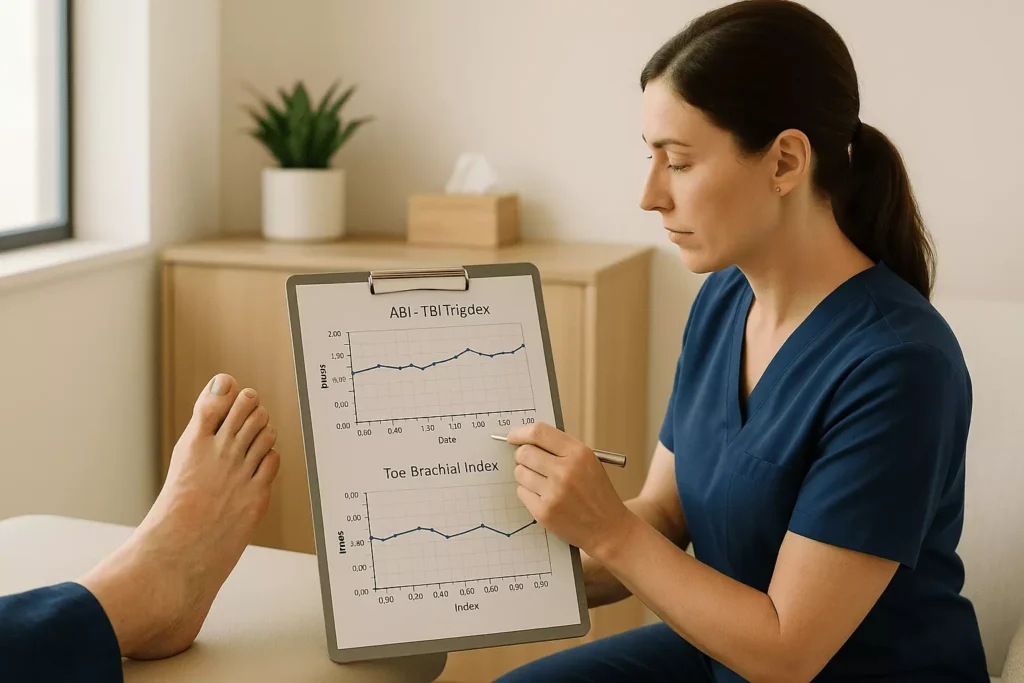Vascular disease encompasses a wide range of conditions that affect the circulatory system, which includes your arteries, veins, and lymph vessels. This network of vessels transports blood throughout the body, but when it becomes damaged or diseased, it can disrupt normal blood flow. Recognizing the signs and symptoms is a step toward understanding your body’s health. Here is more information about recognizing the signs:
Arm and Leg Pain
Pain in the arms and legs, particularly during physical activity, is a typical indicator of vascular issues. This discomfort arises when your muscles do not receive enough oxygenated blood. You might notice cramping or tiredness in your legs while walking, and the pain typically subsides with rest. The location of the pain often corresponds to the location of the narrowed or blocked artery.
This symptom may begin subtly, so paying attention to new or worsening pain is useful. While resting, the muscles require less blood flow, which is why the discomfort often disappears when you stop moving. The pain can manifest in different parts of the leg, including the calf, thigh, or buttock, depending on the affected artery.
The severity of pain varies among individuals. Some people experience only mild discomfort, but others face debilitating pain that limits their mobility. If the blood flow restriction is severe, pain may also occur at rest, especially at night when you are lying down.
Skin Color Changes
Changes in the color of the skin on your arms, hands, legs, or feet can signal vascular disease. Reduced blood flow from arterial disease may cause the skin to appear pale or bluish. You may also notice this discoloration on your toes or fingers.
When you elevate your legs, the skin might turn pale, and when you lower them, it could become reddish or purplish. These color shifts occur because gravity affects the limited blood flow to your extremities. Healthy circulation maintains consistent skin color, so these variations are a noticeable sign.
Ankle Swelling
Swelling in the ankles and feet happens when fluid accumulates in the body’s tissues. It is a frequent symptom associated with venous insufficiency, a condition where leg veins struggle to send blood back to the heart. When the valves in your veins weaken or are damaged, blood pools in your legs and fluid pushes into tissues. The swelling may be more pronounced at the end of the day or after long periods of standing or sitting.
Varicose Veins
Varicose veins are swollen, twisted veins that you can see just under the skin. They usually appear on the legs and can be blue or dark purple. These veins develop when the small valves inside them weaken, allowing blood to flow backward and pool in the vein, causing it to stretch and enlarge.
While sometimes only a cosmetic issue, varicose veins can also cause physical discomfort. Associated symptoms may include:
- An achy or heavy feeling in the legs
- Burning, throbbing, or muscle cramping
- Itching around one or more of your veins
These symptoms may worsen after sitting or standing for a long time. The appearance of bulging, rope-like veins is a distinct characteristic of this condition.
Get Treated for Vascular Disease
Observing signs like persistent leg pain, skin discoloration, swelling, or varicose veins warrants a discussion with a healthcare provider. A medical professional is equipped to evaluate your symptoms, perform a physical examination, and recommend any necessary diagnostic tests. Contact a healthcare provider to schedule an appointment and discuss your symptoms.
